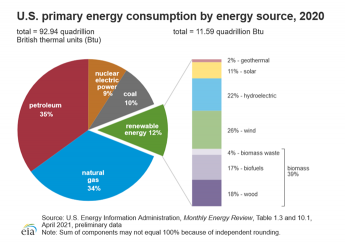Energy and Food Security:
Crisis & Controversy
Energy is one of the defining issues of our time; the availability and affordability of it helps shape the progress and prosperity of society. While humans have nearly always utilized renewable energies such as wood and flowing water, fossil fuels have been a cornerstone of mankind’s wellbeing and most significant advances for well over a century. Nonetheless, under the premise of saving the planet, today’s green energy movement is rushing to replace fossil fuels with inconsistent and largely unreliable wind and solar energy.
This is not to say that renewable energies have no place in our world, but the green energy agenda is forcibly putting the cart before the horse. This comes at a tremendous and dangerous cost to society, and surprisingly, to the environment.
Differing Schools of Thought Regarding Climate Change
The frenetic green energy movement is painted in the colors of dire need to save the planet from human-caused climate change. The mainstream narrative holds that the use of fossil fuels is a major contributor to global warming. However, there are other less publicized but nonetheless valid schools of thought that maintain otherwise, that human influence on climate is minimal, that shifts in global temperatures are natural, and the war on fossil fuels is unwarranted.
When this is considered, it certainly raises questions about the necessity of ushering out fossil fuels and the motivation behind the mad dash to supplant well-established and reliable energy technology with uncertainties.
Globalist Movement Behind Green Energy
When one understands the true driving force behind the green energy movement, it’s easy to see why energy production and use have become such a prominent and highly contentious issue in today’s world.
The roots of the green energy agenda are far more geopolitical than ecological, falling under the umbrella of the globalist movement, which is spearheaded by the United Nations (UN) and World Economic Forum (WEF). In July 2019, UN Secretary-General António Guterres and World Economic Founder and Executive Chairman Klaus Schwab signed a strategic partnership agreement to accelerate the implementation of the 2030 Agenda for Sustainable Development.
Among the UN’s 17 Sustainable Development Goals (SDGs) is “Affordable and Clean Energy.” The stated purpose is to “ensure access to affordable, reliable, sustainable and modern energy for all.” The UN calls for a radical transformation and rapid transition to decarbonized energy systems, stating, “Without deep energy decarbonization, the 1.5°C goal of the Paris Agreement will fall quickly out of reach. Limiting temperature rise to 1.5 degrees requires the reduction of greenhouse gas emissions by 45 per cent below 2010 levels by 2030 and reaching net zero emissions by 2050.”
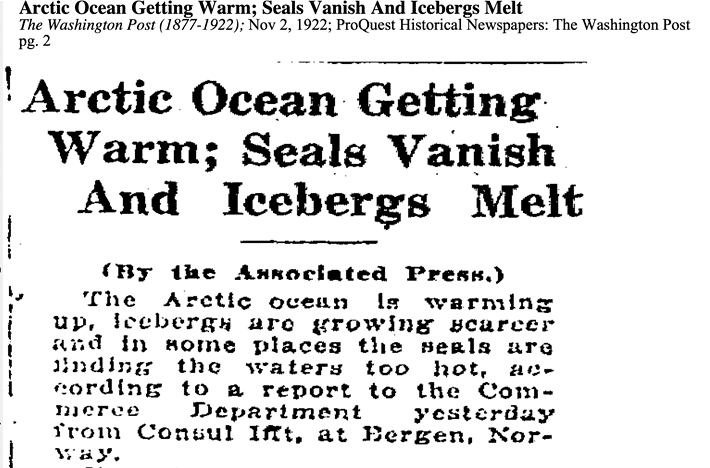
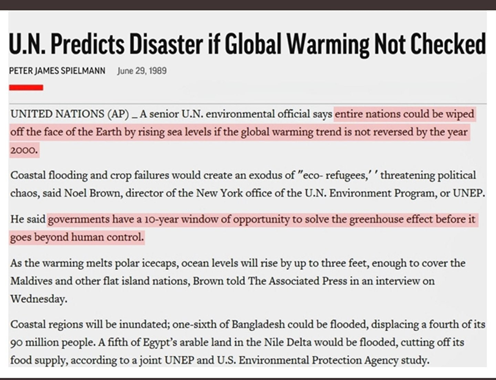
Arbitrary Climate Goals, Historical Catastrophizing
Critics have pointed out that these numbers and target dates are completely arbitrary, and that global powers, in concert with mainstream media, have been catastrophizing the climate for at least a century. After all, alarmism makes for great headlines.
When the most recent disastrous climate predictions failed to materialize, the Chicken Little “sky is falling” narrative began to shift from “global warming” to “climate change,” and the war on fossil fuels was ramped up significantly.
Green Energy = Great Reset
The glaring but intentionally ignored problem is that “green energy” is none of the things it’s advertised to be. A thorough review of the facts shows that it is not affordable, clean, reliable, or even sustainable.
The globalist movement is pushing green energy as part of what is referred to as “The Great Reset,” undermining the foundations of modern life to help implement redistribution of wealth and restructuring of society. The underlying but unspoken tenet is quite simple: control the energy, and you control the people. As we shared in a previous article, restriction of public movement is a hallmark of the UN’s globalist agenda and the 17 Goals for Sustainable Development.
Mandating Electric Cars with No Infrastructure
A perfect example of restricting public movement is the push for people to drive electric cars. Electric cars rely on charging stations, which simply aren’t found everywhere. Additionally, the time needed to re-charge electric cars for longer trips often makes traveling by electric car impractical. This works to inherently limit people’s movement by keeping them closer to population centers where the charging stations are found.
According to Statista, “in January 2022, the U.S. had almost 113,600 charging outlets for plug-in electric vehicles (EVs). A considerable sum of these chargers is found in California, with almost 41,300 public and private power outlets.”
The lack of infrastructure doesn’t just affect the public. The US government set forth the goal for all of their vehicles to be electric by 2035, but testimony in a congressional hearing stated that the government would need 100,000 chargers to make this possible. Currently, there are only about 1,100.
Another common-sense concern is: where are the charging stations getting their power from? The answer to that is the power grid, which in most places is powered by fossil fuels. Swapping fossil fuels in your car to fossil fuels in the charging station does little to fix the problem, especially when the materials needed to create the batteries require mining and disposal when they are no longer useable.
Green Energy is in Direct Opposition to Other 17 Sustainable Development Goals
Even while championing the supposed affordability of green energy, the WEF itself plainly lays out the gargantuan costs of trying to attain the goal of net zero emissions by 2050—and that it would entail a fundamental transformation of the global economy. It is highly ironic that the UN also lists No Poverty, Zero Hunger, and Reduced Inequalities among their 17 SDGs, when it is the most impoverished among us that are hardest hit by the green energy campaign.
It has openly admitted that the planned transitionary period will be very difficult in terms of cost to consumers, with only a mirage of a better future beyond 2050 and vague promises of technological innovations that “may help.”
The Costs of Green Energy Are Astronomical and Will Change Our Way of Life
An article on the WEF website explains the costs and implications:
“Consultancy firm McKinsey says total global spending by governments, businesses and individuals on energy and land-use systems will need to rise by $3.5 trillion a year, every year, if we are to have any chance of getting to net-zero in 2050.
The most noticeable impacts on everyday lives will include rising energy bills, job losses in high-emission industries, changes in what people eat, and increasing outgoings to end our dependence on fossil fuels to heat homes and travel, the report says.
Transitioning the energy sector to zero carbon and beefing up electricity grids to cope with an expected doubling of global demand by 2050 will push up bills by 25% between 2020 and 2040, the report predicts.
Even when the necessary changes have been made, electricity prices will still be 20% higher by 2050, although technological innovations may help to soften the price rises. Costs could be significantly higher if producers fail to build flexible and reliable low-cost power grids.
Although moving away from fossil fuels will cost 185 million jobs, the green economy will create 200 million new roles by 2050, including eight million in renewable power, hydrogen and biofuels, the report says.
Consumers will face the cost of replacing home heating systems and cars that run on fossil fuels and will have to change their diets to avoid high-emission foods such as meat. However, the total costs of owning and running an electric vehicle will be lower than those for a petrol or diesel vehicle in most parts of the world by 2025, McKinsey says.
High-emission industries – which today account for 20% of global GDP – will be most affected by the transition, the report predicts. Coal production will be almost halted by 2050, while oil and gas production will more than halve.
There will also be a 30% rise in the cost of producing steel, while cement-making will become 45% more expensive by 2050.”
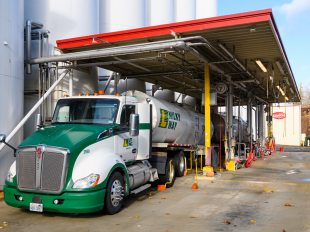


“Let Them Eat Cake”
The current state of world affairs is already giving us a bitter taste of what’s to come between now and 2050. With record high fuel prices, the people being forced to choose between buying groceries and gassing up their car are being told by the powers that be that they should buy a $60,000 electric vehicle (EV) to save on gas.
That said, even those who already own an electric car aren’t immune to looming financial difficulties.
The lithium-ion batteries that power EVs don’t last forever. Demand, and therefore cost, for lithium has skyrocketed over the last 10 years. Further, it has been estimated that demand for lithium will increase 40-fold by the year 2040. The expense of replacing an EV’s battery will be extremely prohibitive.

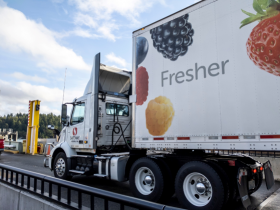

Food Production and Food Prices Paid by Families
Food prices have soared and are not likely to come down anytime soon, since food production and distribution depend almost entirely on fossil fuels.
According to the U.S. Energy Information Administration:
“Agricultural energy consumption includes energy needed to grow and harvest crops and energy needed to grow livestock. Crop operations consume much more energy than livestock operations, and energy expenditures for crops account for a higher percentage of farm operating costs.
Agricultural energy consumption includes both direct and indirect energy consumption. Direct energy consumption includes the use of diesel, electricity, propane, natural gas, and renewable fuels for activities on the farm. Indirect energy consumption includes the use of fuel and feedstock (especially natural gas) in the manufacturing of agricultural chemicals such as fertilizers and pesticides.
Energy makes up a significant part of operating expenditures for most crops, especially when considering indirect energy expenditures on fertilizer, because the production of fertilizer is extremely energy-intensive, requiring large amounts of natural gas. For some crops like oats, corn, wheat, and barley, energy and fertilizer expenditures combined make up more than half of total operating expenses. The proportion of direct to indirect energy use varies by crop. For example, corn, which is also used as an energy input for ethanol production, has relatively low direct fuel expenditures but has the highest percentage of fertilizer expenditures.”
Even though agriculture accounts for less than 2% of total energy consumption in the United States, the effects of increased energy costs reverberate throughout our nation’s population in the form of heightened food prices.
Green Energy Reliability Issues Related to Long Term Storage
According to Alex Epstein, author of Fossil Future: Why Global Human Flourishing Requires More Oil, Coal, and Natural Gas, Not Less, fossil fuels are unique; they are the only type of energy that can consistently meet the needs for electricity, transportation, and heat on demand.
At this point in time, solar and wind energy are simply unreliable. When the wind is blowing and the sun is shining, there is an abundant energy supply that can easily meet domestic demand. However, when sun and wind are absent, the supply of renewable energy plummets because the technology and infrastructure for long-term storage do not yet exist. Currently, the lithium-ion batteries used for energy storage can output stored energy at full capacity for a little more than four hours, but more than eight hours capacity are needed for most plans to implement increasing renewable energy use on a broad scale.
California is serving as a canary in the coal mine regarding the challenges of large-scale renewable energy systems. In 2018, the state adopted a policy requiring that renewable and zero-carbon energy resources supply 100 percent of electric retail sales to customers by 2045. The California Energy Commission estimated that in 2020, 34.5 percent of the state’s electricity was supplied by renewables. Even with the majority of electricity coming from traditional sources that year, during the peak heat of summer of 2020, areas of California endured rolling blackouts because of the vulnerability of green energy.
Since electric vehicles rely on the same power sources as municipalities, it makes sense that many people, especially in rural areas, see electric vehicles merely as expensive and impractical novelties.
Despite intense promotion of renewable energy, it only accounted for 12% of primary energy consumption in the United States in 2020.
Electric vehicle drivers might be surprised to learn that the energy for their cars cannot be produced by “green” energy alone. Even Tesla’s Supercharger in Hawthorne, California has a mix of energy–0.2% solar, 5.5% nuclear,13.3% natural gas, 27% coal and 49.9% wind, to be exact.
The role of fossil fuels beyond energy must also be taken into account. Fossil fuels are crucial for a wide variety of essential products, from plastics to fertilizers. In the Wall Street Journal, Allysia Finley wrote: “The inconvenient truth for progressives is that petrochemicals are ubiquitous and indispensable. Replacing oil and gas as an energy source poses enormous technological challenges. Replacing them as a product feedstock would be next to impossible.”
Robbing Peter to Pay Paul
The ultimate irony in all of this is that, from start to finish, nothing about green energy is sustainable.
The increasing implementation of green energy means a great increase in mineral extraction around the globe, but not even a significant decrease in fossil fuel extraction. It has been referred to “destroying the earth to save the air.” Simply put, the end doesn’t justify the means.
Regardless that the energy produced is “green,” the raw materials to build solar panels, windmills, transmission lines, charging stations, and batteries still need to be extracted from the earth. It matters little to the overall global environment which country the various extraction processes take place in, but current US policies have largely curtailed domestic production, causing the sky-high energy prices we are facing.
Despite the government’s current flaccid green energy grandstanding, projections from the United States Energy Information Administration show only a 6% reduction in fossil fuel use by 2050.
It has been estimated that as much as 85% of wind energy components come from China, and the production and transportation of them depend on fossil fuels. China is responsible for more carbon emissions than the rest of the developed world combined, and yet citizens of the United States are being made to bear the financial burden of the green energy movement’s Quixotic quest.
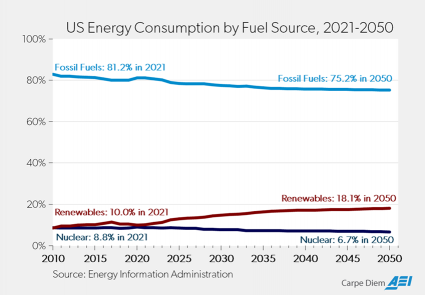
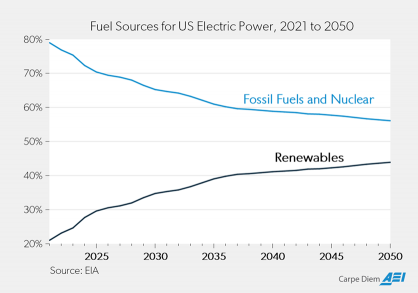
Land Use and Environmental Impact
The windmills and solar panels produced are then installed over vast swaths of land. Award winning investigative reporter, Michael Shellenberger, wrote that “solar farms take 450 times more land than nuclear plants, and wind farms take 700 times more land than natural gas wells, to produce the same amount of energy.” Shellenberger is the author of Apocalypse Never: Why Environmental Alarmism Hurts Us All.
Besides the sheer amount of land that’s being overtaken by “green” energy, the impact of windmills and solar panels on the environment and wildlife is substantial—but mostly ignored. For example, solar farms create heat islands, and windmills devastate bird populations—even eagles. On Twitter, Shellenberger wrote: “A lot of people think you’re not allowed to kill bald eagles, but you are. You just have to pay $53,333 for each one. And you have to make sure you kill them with a wind turbine. Because it’s necessary to kill eagles to save them from climate change.”
Windmills can last up to 30 years, but when they are decommissioned, the materials of the blades go almost completely to waste. According to Range Magazine, the blades are made of fiberglass and carbon fiber, which are thin sheets of balsa wood harvested mainly from rainforests, and then welded together with resin. In the US alone, as many as 8000 blades will need to be disposed of annually. Some recycling efforts are used—the blades are shredded and turned into pellets to be burned in cement factories—but most of the blades are simply buried.
Energy Security = Food Security = National Security
At Protect The Harvest, we strongly believe that a nation’s ability to feed its people is paramount to national security. As we are currently seeing with high fuel and food prices, the globalist green energy agenda being embraced by the Biden administration is a direct, targeted attack on the pocketbooks and pantries of American families—and has nothing to do with saving the planet.
The description for Michael Shellenberger’s aforementioned book aptly closes with the following:
“What’s really behind the rise of apocalyptic environmentalism? There are powerful financial interests. There are desires for status and power. But most of all there is a desire among supposedly secular people for transcendence. This spiritual impulse can be natural and healthy. But in preaching fear without love, and guilt without redemption, the new religion is failing to satisfy our deepest psychological and existential needs.”
Links
Read More About The UN’s Plan for Our Future HERE
Read Writings from Michael Shellenberger HERE and HERE
Wall Street Journal Article About Fossil Fuels and Roles in the World HERE
Issues with Windmills in Nebraska HERE
Link to 2000 Article published by the Associated PressHERE


